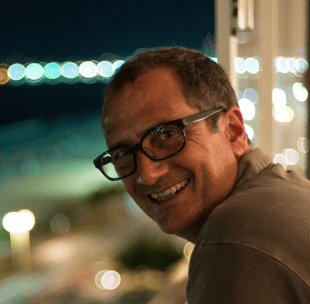

ANIMAFEST SCANNER X | SYMPOSIUM FOR CONTEMPORARY ANIMATION STUDIES | PANEL 3 – ANIMATION ASSISTING OTHER ART FORMS
TYPE E-MOTION - POETICS OF ANIMATED TYPOGRAPHY IN MOTION João Paulo Schlittler (Associate Professor, Universidade de São Paulo, Brazil)
PANEL 3 – ANIMATION ASSISTING OTHER ART FORMS
TEATAR &TD
07/06 WED 11:35-12:05
Contemporary and Modernist artists have experimented with animation in a variety of forms: from kinetic sculpture to abstract animated experiments, animation has added visual and temporal aspects to their work. Motion design and scientific films are increasingly using animation to support explanations and facilitate communication. However, animated graphics are not exclusively functional. Considering both cases, this research intends to survey animated typography as a means of expressing emotions in a range of art forms, such as poetry, cinema, music, visual and digital arts. Kinetic typography has its foundations in motion-based experiments of the Bauhaus, De Stijl, Dadaist and Futurist avant-garde movements. Marcel Duchamp’s Anemic Cinema is a landmark of kinetic poetry. Abstract animation by Richter, Ruttmann, Moholy-Nagy and typographic experimentation by McLaren and Len Lye are historically important in defining a field established by motion design pioneers Saul and Elaine Bass, Maurice Binder and Pablo Ferro. Among other examples, this study will survey: electronically animated Brazilian concrete poetry by Ferreira Gullar, Augusto and Haroldo de Campos, visual poetry GIFs by musician Arnaldo Antunes, David Byrne’s PowerPoint art, Flash-generated interactive poetry by Brian Kim Stefans and Jörg Piringer’s myriad of computational poetics. In our networked culture, animated typography can construct space: The Matrix’s binary green digital rain is emblematic of cybernetic realities, text builds an entire city in Alex Gopher’s music video The Child and typographical animation can also occupy and re-signify physical spaces as Graffiti Research Lab demonstrate in urban interventions. Motion graphic designer Nando Costa ponders that as we adopt artificial intelligence in our creative process ‘the reshaping of art and design has already begun’. Consequently, we may argue that text-to-video animation conversion algorithms will reshape typographical communication and therefore writing as we know it today.
João Paulo Schlittler is a researcher and designer working in film, television and digital media. He holds a PhD in Design from Universidade de São Paulo (USP), a Masters Degree in Interactive Telecommunications from New York University and a B.A. in Architecture from USP. He is an Associate Professor at the Film, Radio and Television undergraduate program at USP’s School of Communication and Arts as well as in the graduate Design program at USP’s Faculty of Architecture and Urbanism. He is the coordinator of ZOOTROPO, an animation studies research group. João Paulo headed the design department at TV Cultura in Brazil, was Director of Broadcast and Interactive Design at Discovery Networks and Director of Graphics and Visual Effects at HBO.


